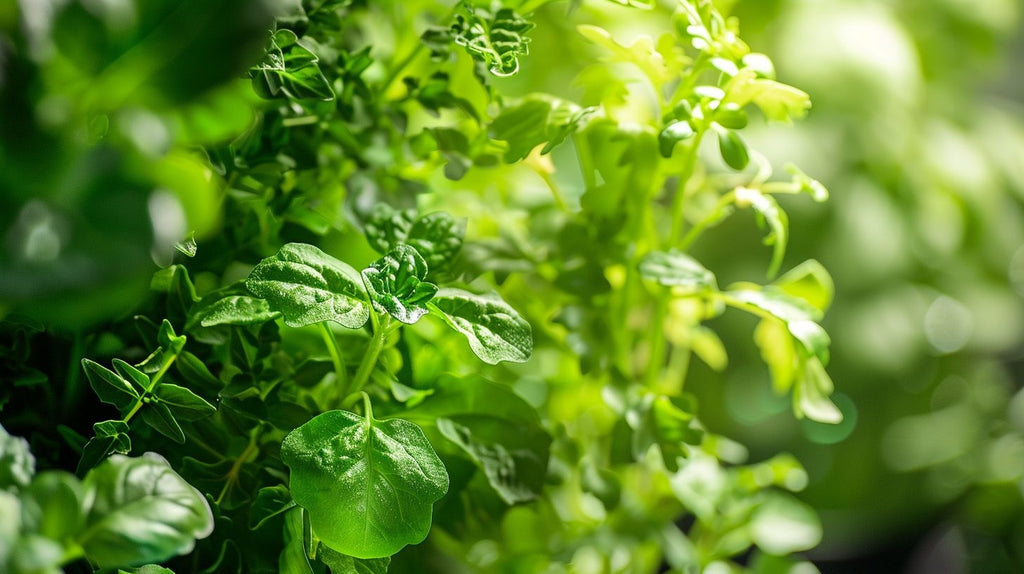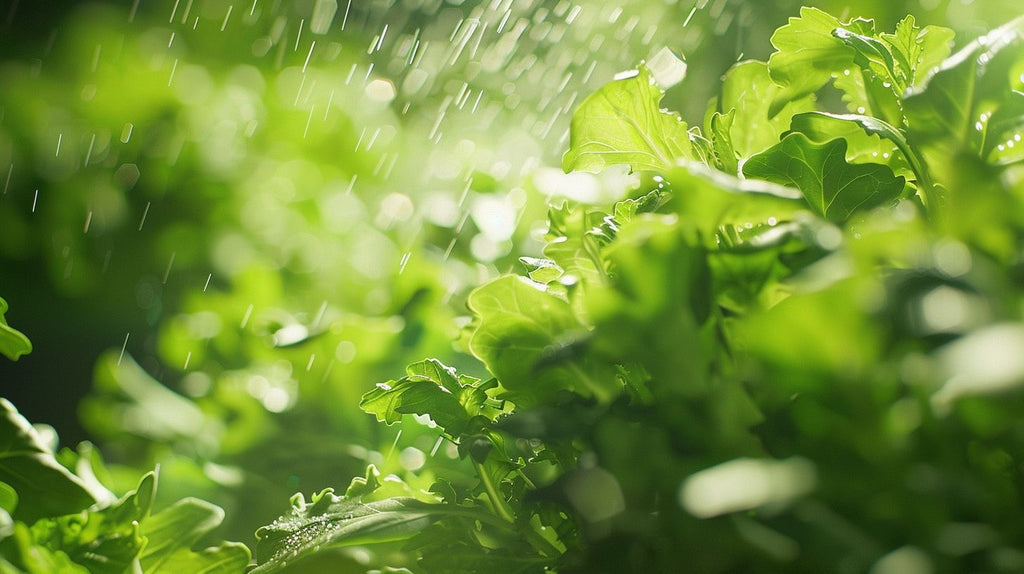What to Grow in a Hydroponics Tower: A Comprehensive Guide to Thriving Plants
Hydroponics towers are revolutionizing urban gardening and small-space farming, offering an efficient and sustainable method to grow fresh produce year-round. These vertical gardening systems not only maximize limited space but also reduce water usage and eliminate the need for soil, making them ideal for both novices and seasoned gardeners.
Understanding what to grow in a hydroponics tower is crucial for maximizing yields and ensuring a successful harvest. Leafy greens, herbs, and certain fruits thrive in these systems, benefiting from the nutrient-rich water and controlled environment.
In this guide, we'll explore the best plants for hydroponics towers, considering factors such as growth habits, nutrient requirements, and light needs to help you cultivate a flourishing vertical garden.
Types of Plants Suitable for a Hydroponic Tower

In hydroponic towers, growers find success with a variety of plants. They choose those that thrive in water-based environments for the best results.
Vegetables
Leafy greens, lettuce, and chard thrive in hydroponic towers. They give big yields and pack a lot of nutrients. These plants grow fast and don't need much space or support. Brussels sprouts also do well, adding variety to your garden.
For those wanting bigger vegetables, tomatoes, eggplants, and bell peppers are excellent choices. However, they require grow cages for support as they get heavier. Cabbages and broccoli can also flourish but might need extra support to stay upright. All these vegetables use water efficiently in a hydroponic setup, making them perfect for tower gardens.
Herbs
Herbs thrive in hydroponic towers, making them a perfect choice for your setup. Basil, mint, and cilantro grow quickly and use less space. This method lets you harvest fresh herbs all year round. Aromatic herbs like these add great flavor to meals right from your tower garden.
Growing herbs vertically is also efficient and saves money. It's ideal for growers looking to maximize their space and yield in a hydroponic tower.
Fruits
After discussing the best herbs for your hydroponic tower, let's dive into fruits that thrive in this environment. Hydroponic strawberries are a top choice for growers looking to harvest sweet and juicy fruits; they really shine when grown aeroponically on Tower Gardens.
Other fruiting vegetables like tomatoes, eggplants, and bell peppers also do exceptionally well but need to grow cages for added support.
Melons and watermelons can be grown using Tower Gardens as well. However, it’s important to note these might not yield the same size or sweetness as those planted in soil. For optimal growth of these larger fruits, extra attention and care are needed to ensure they receive enough nutrients and support as they develop on your hydroponic tower.
Understanding Hydroponic Towers

Hydroponic towers let plants grow without soil. They use water mixed with nutrients instead. This method helps plants get what they need more easily, leading to faster growth and bigger yields. Growers find these towers especially useful for small spaces because they grow plants vertically.
Light, climate, and quality of seeds affect how well things grow in a hydroponic tower. Leafy greens and herbs do really well because they love the nutrients from the water. Fruiting vegetables like tomatoes and bell peppers also thrive but need extra support from cages. With proper care, almost any plant can succeed in this setup.
Benefits of Growing Plants in a Hydroponic Tower

Growing plants in a hydroponic tower offers many advantages. Leafy greens, lettuce, and herbs grow with better yield and nutrient density than in traditional gardens. This method uses water efficiently, making it eco-friendly.
Growing vegetables like tomatoes and bell peppers thrive, producing abundant harvests without the need for soil. Growers save space as these towers fit easily in small areas, ideal for urban settings.
Strawberries from Tower Gardens taste sweeter and juicier. Even challenging crops like cabbages and broccoli excel in this controlled environment. For those legally growing herbs, hydroponic towers offer a cost-effective solution with superior results compared to conventional methods.
Materials and Tools Needed for Building a Hydroponic Tower
Building a hydroponic tower lets you control the environment for your plants. It's an efficient way to grow vegetables, herbs, and fruits without soil.
- PVC Pipes or Food-Grade Plastic Tower: These form the structure where plants will grow. They are lightweight and easy to work with.
- Water Pump: This circulates water and nutrients through the tower, ensuring plants receive what they need.
- Nutrient Solution: A mix of essential minerals that replaces soil. You'll add this to the water.
- Net Pots: Small baskets that hold plants in place within the tower. They allow roots to access the nutrient-rich water easily.
- Grow Lights (for indoor towers): These simulate sunlight, which is crucial for plant growth. Pick lights suited for the types of plants you're growing.
- pH Test Kit: This helps monitor water quality. Keeping pH levels balanced ensures your plants can absorb nutrients properly.
- Timer for Lights and Water Pump: Automates light exposure and watering schedules, making maintenance easier.
- Support Structures: As Agrotonomy suggests, grow cages support fruiting vegetables like tomatoes, while structures may be needed for cruciferous vegetables.
- Seeds or Seedlings: Choose high-quality options adapted for hydroponic growth. Consider experimenting with different varieties as Agrotonomy did with over 200 crops.
Steps to Build a Hydroponic Tower

Now that you have gathered all the materials and tools let's dive into building your hydroponic tower. This project will set the stage for a lush, vertical garden.
- Assemble the base. Start by securing your reservoir tank to stabilize the foundation of your tower.
- Attach the vertical columns to the base. Ensure they are firmly connected to support the plants as they grow.
- Insert net pots into holes spaced along the columns. These will hold your plants in place.
- Set up the water pump system within the reservoir. This is crucial for circulating nutrient-rich water to your plants.
- Run tubing from the pump up through the center of each column to distribute water evenly.
- Fill each net pot with a growing medium, like perlite or coconut coir, which will support your plants' roots.
- Plant seeds or seedlings into each net pot. Choose leafy greens and aromatic herbs for superior yield and flavor.
- Install grow lights above your tower if you're setting it up indoors, ensuring all plants receive adequate light.
- Enclose fruiting vegetables like tomatoes and bell peppers in grow cages for support as they mature.
- Set up a timer for lighting and water pump cycles to automate care for your tower garden.
Post Preparation Care for a Hydroponic Tower
After building your hydroponic tower, check the water levels daily. Plants in towers use water differently based on their size and type. Keep an eye out for any signs of pests or diseases early on to protect your plants. Adjust the pH balance of the water as needed. This helps your vegetables, herbs, and fruits absorb nutrients better.
Make sure your fruiting vegetables like tomatoes and peppers have enough support with grow cages. For heavy producers like melons, ensure they're securely attached to avoid strain on the plant stems.
Monitor nutrient solution concentrations regularly; this keeps your leafy greens vibrant and healthy. Lastly, clean the system every few weeks to prevent algae growth and maintain a healthy environment for all plants in your tower garden.
Key Takeaways
- Hydroponic towers allow you to grow plants like leafy greens, herbs, and even fruiting vegetables without soil. These towers use nutrient-rich water and can fit in small spaces.
- Vegetables such as lettuce, tomatoes, and peppers do very well in hydroponic towers. Herbs like basil and mint also flourish, giving you fresh flavors all year round.
- To build your own tower, you'll need materials, including PVC pipes or a plastic tower, a water pump, nutrient solution, net pots, grow lights for indoor setups, and seeds or seedlings of your chosen plants.
- After setting up your hydroponic tower, make sure to check the water level daily. Adjust the pH balance when needed and clean the system regularly to keep your plants healthy.
- Strawberries and other fruits can be grown in hydroponic towers, too, but may require extra care for optimal growth.
Conclusion
Growing plants in a hydroponics tower unlocks a world of possibilities. From lush green vegetables to sweet fruits and aromatic herbs, the variety is impressive. You'll enjoy higher yields and nutrient-rich produce all year round.
With the right care, your tower garden will flourish, offering both beauty and bounty. Embrace this innovative gardening method for an efficient and rewarding experience.
For all your gardening tools and hydroponic equipment needs, look no further than Canada Grow Supplies. We are your one-stop shop to ensure your hydroponic garden thrives.
Contact us for more information, and don't forget to visit our blog for the latest tips and tricks on hydroponic growing. Let Canada Grow Supplies be your partner in cultivating a lush, productive garden in any season.
FAQs
Can I grow fruits in a hydroponics tower?
Yes, you can grow small fruits like strawberries and tomatoes in a hydroponics tower.
Is it possible to grow herbs in my hydroponic system?
Absolutely, herbs such as basil, mint, and cilantro thrive well in hydroponics towers.
Can leafy greens be grown in a hydroponics tower?
Yes, leafy greens like lettuce and spinach do great in a hydroponics setup.
Are there any vegetables that don't do well in a hydroponics tower?
Root vegetables like carrots and potatoes generally do not perform well due to their growth requirements.
How long will it take for plants to start growing visibly?
Plants usually begin showing significant growth within 2-4 weeks of planting them in your hydroponic system.








